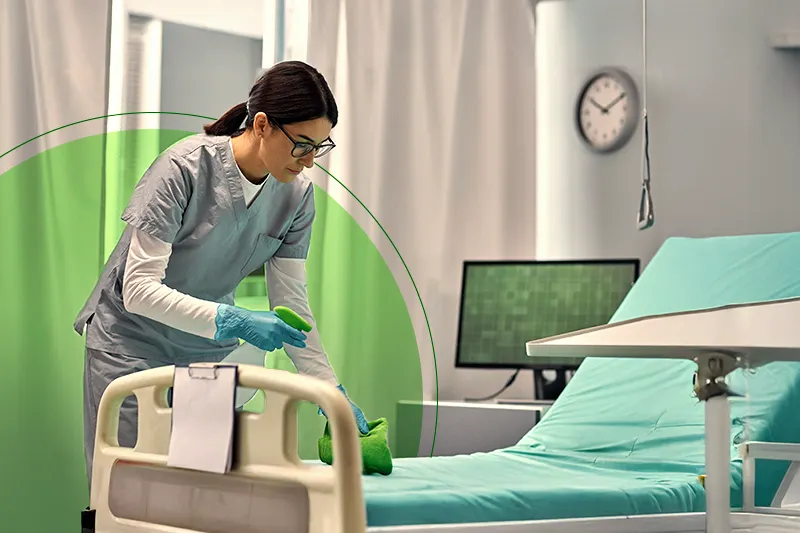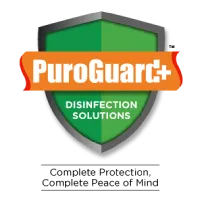Prevention of Healthcare-Associated Infections: CDC Recommendations and Strategies for Effective Control

Healthcare-associated infections, commonly termed HAIs, present the greatest danger to the patient safety worldwide. These infections are experienced by the patients during their treatment within the hospital or other service delivery sites of health care that might lead to severe health issues calling for a stay over a longer period within the hospitals and increased expenses in their respective treatment. According to CDC reports, HAIs occur in 1 in 31 patients at any given time. Therefore, infection control remains an important process within hospitals, clinics, and other health care settings.
Apart from Hand hygiene, Environmental cleanliness and sanitization form the core among the most important factors of infection control. Correct application of effective disinfectants, such as Cororid Broad Spectrum Disinfectant 256, is one of the main components of the guidelines outlined by the CDC for infection prevention and control in healthcare facilities.
Healthcare related infections are caused by the spread of pathogenic microorganisms in a health care setting mainly through surfaces, equipment or improper hand hygiene. The common HAIs include the following categories:
- Surgical site infections (SSIs): These are infections that affect people after surgery, probably at the site of the operation.
- CAUTIs: This is associated with catheters. It is one of the most common HAIs.
- VAP: Pneumonia associated with prolong and improper use of Ventilators
- Central Line Associated Bloodstream Infection CLABSI: Germs enter the blood through central lines placed for days, to infuse antibiotics or fluid ?
Such infections threaten not only the health of patients but also healthcare systems. They can be fought only when there is a sound strategy of infection control, like regular disinfection of surface contact areas and medical equipment.
Role of CDC in Prevention of Healthcare Infections
The CDC, plays the core role in developing ways of preventing HAIs. Its guidelines on infection control help healthcare facilities in minimizing the spread of infections. Some of the key recommendations by the CDC are:
- Hand Hygiene: Proper hand washing with soap or use of hand sanitizers are important to minimize the spread of germs.
- Disinfection and sterilization: According to the CDC, all surfaces, equipment, and devices that have to be used on a patient should be cleaned and disinfected regularly.
- PPE’s usage: The masks, gloves, and gowns would protect patients and health workers from the pathogens
- Environmental hygiene: Infection spread could be prevented by a clean environment obtained due to correct cleaning methods and efficient disinfectants.
- Antimicrobial Stewardship: The misuse of antibiotics and the disinfectants is well targeted, and this has aided in preventing the development of resistant strains of microorganisms.
These guidelines are important to reduce the HAIs and making hospitals safer place to work and treat patients
Why Broad-Spectrum Disinfectants are Important in Healthcare
Among the most useful weapons against HAIs is a broad-spectrum disinfectant that kills more than a few types of pathogens, including bacteria, viruses, fungi. This makes it a very effective weapon to have in healthcare areas where there will be high burden of pathogens.
The importance of broad-spectrum disinfectants is that they offer protection against multiple pathogens. This is particularly critical in ICU departments, surgical wards, and outpatient clinics, which are highly susceptible to various pathogens. Without proper disinfection, these harmful microorganisms can persist on surfaces and continue to spread infections.
Cororid Broad Spectrum Disinfectant 256: Meets the CDC Requirements
Cororid 256 is a broad-spectrum disinfectant, designed to effectively combat a wide range of infections. The product has been formulated to be effective in combating most bacteria, viruses and fungi. In this respect, it stands best for hospitals, clinics or health care and other similar institutions because it ensures high standards of hygiene and prevents infections.
Key Features of Cororid Broad Spectrum Disinfectant 256 :
- Broad spectrum antimicrobial activity: Cororid BD 256 has strong broad-spectrum activity against bacteria, mycobacteria, viruses, fungi, and other pathogens. Hence it is recommended for disinfection in critical and non-critical areas of the hospitals and can be used for mopping, spraying, terminal cleaning, fogging, linen disinfection, etc.
- Dilution : Recommended dilution is 0.4% for noncritical areas and 1% for critical areas of the hospital This makes it highly cost-effective at the same time, profoundly efficient. Huge areas can be covered by healthcare facilities through minimal quantities of the product without getting the costs compromised.
- Application: It can be used for disinfection in critical and non-critical areas of the hospitals for mopping, spraying, terminal cleaning, fogging, linen disinfection, etc.This makes it ideal for daily application in hospitals, clinics, and nursing homes.
- Non Corrosive and broad material compatibility: The Cororid BD-256 is safe to use in health institutions: It is noncorrosive hence safe to use on medical equipment and surfaces, ensuring devices or other sensitive materials are not damaged while undertaking the disinfection process as it is compatible on multiple surfaces present at hospital.
Why is Disinfection Essential in Healthcare?
Improper disinfection of surfaces ranks as the biggest cause of the transmission of healthcare-associated infections according to the Centers for Disease Control and Prevention. Most of the frequently touched surfaces in the healthcare environment include doorknobs, bed rails, and medical equipment. These surfaces act as a reservoir where pathogens stay and readily transfer to both the patients and the healthcare workers when they are not disinfected appropriately.
The application of a broad spectrum disinfectant like Cororid BD 256 minimizes residual and spread of such pathogens from surfaces. Its effectiveness against various pathogens would form an integral part of any infection prevention and control in the healthcare institution.
How Does Cororid Meet CDC Recommendations?
According to CDC, infection control guidelines require the use of effective disinfectants that do not allow further spread of HAIs. In connection with the above points, Cororid Broad Spectrum Disinfectant 256 is effective on various fronts that meet the requirements as discussed by the CDC.
- Adherence to CDC’s Efficacy Requirements: CDC directs that a disinfectant registered and proved to be active against a wide range of pathogens should be used. Cororid BD-256 is therefore formulated to inactivate wide range of bacteria, viruses, and fungi thereby ensuring complete protection in the health care settings.
- Environmental Safety: Centers for Disease Control and Prevention recommends using product those are environment friendly. Cororid BD-256 is biodegradable and not causing harm to environment.
- Cost Effective Solution: CDC develops this point by using resources efficiently in the health care system. High dilution ratio and broad spectrum of efficacy make Cororid BD-256 a cost effective solution for facilities, maintaining high standards of hygiene without more funds than they can afford .
Conclusion
Preventing healthcare-associated infections will always top every hospital’s priority list. This calls for great attention to following guidelines by the CDC. Broad-spectrum disinfectants such as Cororid Broad Spectrum Disinfectant 256 are effective in controlling spread of
Adding Cororid BD-256 to their routine cycles of cleaning and disinfection by healthcare centers will cut the potential danger from infections and ensure that patients as well as the surroundings are safe for healthcare workers. In this investment in quality disinfectants, hygiene alone is at stake; it is a step towards better outputs for the patients and the curtailment of the incidence of harmful infections.


